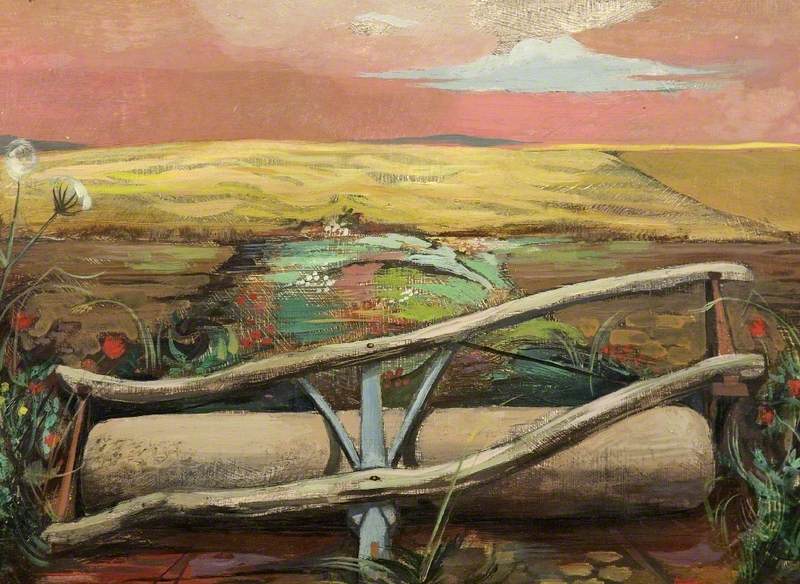
Field rollers: essential, heavy-duty farm equipment. They break down clods of earth after ploughing, embed the scattered seed and make it easier to harvest crops that will lie close to the surface. The earliest field rollers were improvised from tree trunks; later, granite was sometimes used. Horses or oxen pulled them. Today they are steel, and in the Fens huge tractors pull gangs of them across prairie-like fields.
Michael Ayrton’s painting of an abandoned field roller always draws my gaze. It was painted when Ayrton was only 27, and shows the influence of Paul Nash and Graham Sutherland; but it’s a mysterious picture that might have been painted by a much older artist, someone with a strong sense of continuity and an abiding awareness of the past. Ayrton once wrote, “I do not believe it is possible to create living art out of anything but the direct visual experience of nature, combined with the heritage of a tradition.”*
Ayrton’s field roller dominates the picture, but not the landscape. Abandoned and semi-derelict, its chassis, with its two rough-hewn wooden braces, has collapsed on one side. Poppies and dandelions entwine the ironwork; daisies and grasses flourish in the fallow field beyond. But in the middle distance, the corn is waving, ready for harvest. Sunlight just catches the distant edge of the field and the far hills are in shadow against the strange pink light.
Actually, the sky has a hole in it. Above the white cloud a patch has been scraped away by the artist, revealing a faint gauze-like texture. Ayrton believed in the power of metaphor and image; and beyond the abandoned roller, beyond the fields, beyond the blue hills and the pink sky, this glimpse of the barely-primed canvas suggests possibilities stretching way beyond the limits of our ability to see.
Adrian Barlow
*Michael Ayrton, Golden Sections, 1957, p.80
To see more artworks from The Wilson collection go to the Art UK website (click here) or The Wilson’s website (click here).
